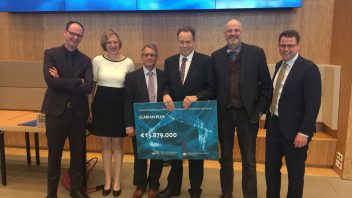Visualizing the Unknown by Eric Jorink receives NWO Open
NWO has awarded a grant from the Open Competition to the project Visualizing the Unknown in 17th-century Science and Society. In this project, researchers from the Huygens ING, Max Planck Institute and Rijksmuseum Boerhaave reconstruct how seventeenth-century microscopists visually recorded and shared their groundbreaking discoveries. As the ‘spiky blob’ image of the corona virus demonstrates, the visual representation was way ahead of establishing the scientific facts.
Looking at previously unknown life forms such as bacteria, sperm and the intestines of insects, seventeenth-century pioneers of microscopy had to develop a new visual language to understand, record and communicate their discoveries. The strategies they developed form the basis of current scientific practice. Visualizing the Unknown in 17th-century Science and Society analyzes the complexity behind seemingly self-evident scientific images of the micro world.

Reconstruction of groundbreaking discoveries
Project leader Eric Jorink: ‘We analyze by reconstructing the groundbreaking seventeenth-century discoveries for the first time, partly with the help of original lenses and preparations. A pilot in 2019 produced spectacular results. We receive help from the Royal Society of London and the well-known micro-photographer Wim van Egmond. We use the most modern digital techniques to show what pioneers such as Robert Hooke (1635-1703), Johannes Swammerdam (1637-1680) and Antonie van Leeuwenhoek saw for the first time in those days.
We hope this will enable us to answer questions such as: can scientific facts (and their images) be trusted? How are people convinced that what they see in images actually exists? How are these images constructed so that they can convey a clear message?’
Partners
The current project will examine in detail the whole trajectory from preparation, observation, visual reporting, peer review and publication to impact. Visualizing the Unknown contextualizes the procedures and problems that have formed the basis of scientific practice ever since. The project is a collaboration between Huygens ING (KNAW), Bibliotheca Hertziana – Max Planck Institute for Art History in Rome and Rijksmuseum Boerhaave in Leiden. Partners are the Royal Society of London and the Rijksmuseum Amsterdam.





